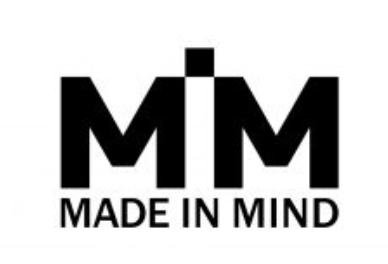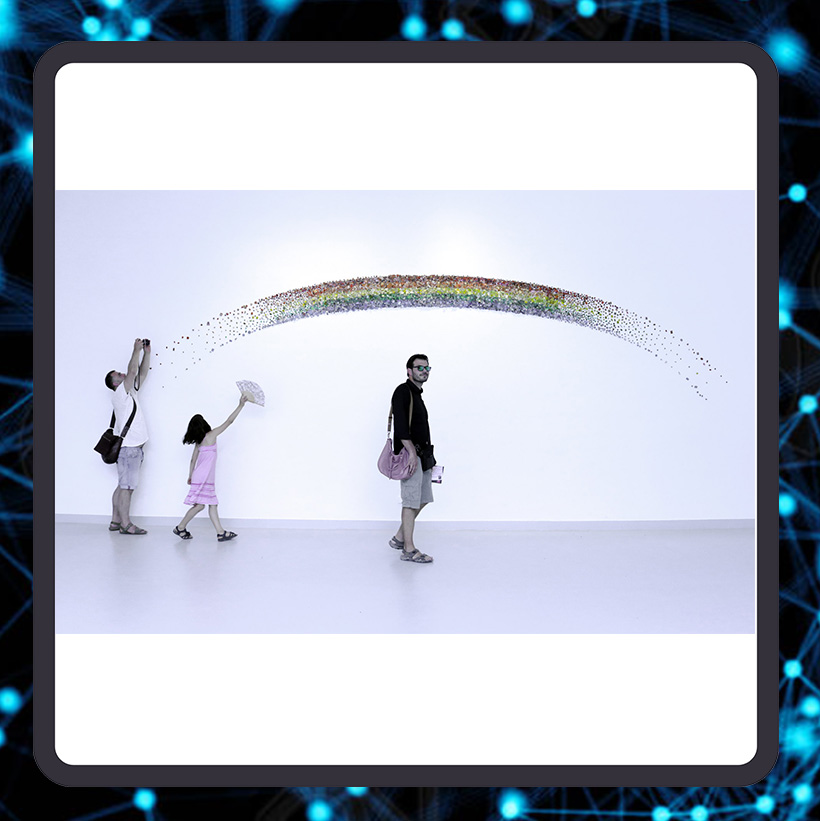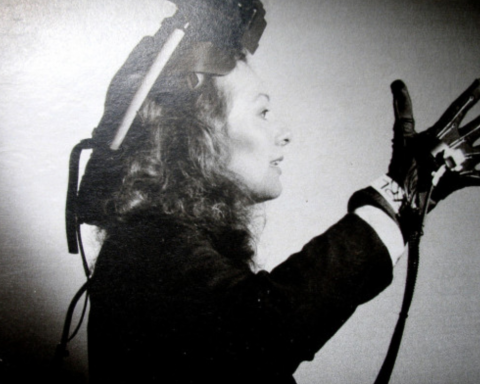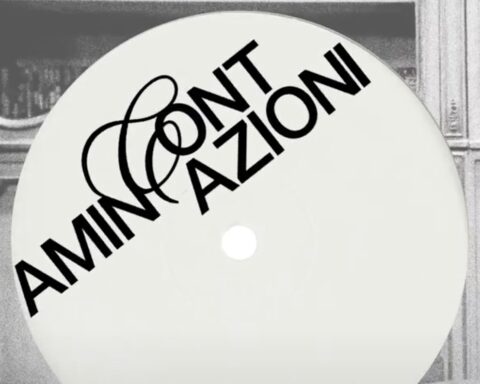V-SPACE, curated by Gianluca Gramolazzi, allows us to take time to think about the relationship between digital and real, thanks to essays written by curators and art critics. For issue #22, Domenico Quaranta analysed the evolution of our relationship with digital cultural products: from illegal downloads to NFT (non fungible token), in a context where information wants to be free and wants to be expensive.
At the first Hackers Conference in 1984 Stuart Brand, the founder of the Whole Earth Catalogue, uttered a sibylline sentence about information, which later appeared, in a more elegant form, in his book The Media Lab: Inventing the Future at MIT (1987): “Information wants to be free. Information also wants to be expensive…That tension will not go away.” (1)
Along the last decades, we experienced both sides of this tension, in ways that didn’t seem to be going to change. Despite copyright regulations, trials, obfuscated websites, hardware and software protections, digital or digitized information always found a way to circulate freely and for free: from cracked cartridges to scanned books, from streaming football matches to badly recorded movies, from commercial software to mp3 discographies to leaked classified documents. With Free Software, and later on Open Source and Creative Commons, a whole cultural movement emerged in order to adapt the idea of intellectual property to digital, networked modes of circulation. In an age in which “we copy like we breathe” (Cory Doctorow, 2011), we also got used to sharing our contents for free on platforms that grant us free access to them. (2)
Markets for digital contents developed anyway, yet they were always based on the implicit assumption that they should be cheaper than material contents or experiences. But the value of digital information – its wish to be expensive – usually manifested in another way: through the impressive economies some companies were able to build upon scraping, collecting, mining, processing, elaborating huge amounts of free personal data and turning them into meaningful information that can be sold to advertisers. Something that became crudely visible along the pandemic, when we all became poorer except the likes of Jeff Bezos or Elon Musk, or the companies behind Zoom and Tik Tok.
March 2021 will go down in history as the spring in which a .jpg file was sold for 96 million bucks, becoming one of the most expensive works of visual art ever sold by a living artist – and the most expensive piece of digital information ever. The file can be accessed and downloaded by anybody from the link below(3)
By clicking on it, you get exactly the same file (same resolution, same pixel matrix) that Metakovan – a Singapore – based blockchain entrepreneur – bought from Christie’s for all that money. So, what happened here?
Metakovan didn’t actually buy that file, but a “non fungible token” (NFT) registered on the Ethereum blockchain, linking to a metadata file that refers to the unique string of digits identifying our jpg on a peer to peer protocol called IPFS (Inter Planetary File System). While the jpg file can still be copied and downloaded, the NFT is unique, protected as it is by cryptography and registered on a tamper-proof distributed database called Blockchain. First conceived in 2008 to allow online transactions between two nodes without the supervision of a financial institution, Blockchain has proven its security along the last decade by allowing the creation of a number of cryptocurrencies, most notably Bitcoin and Ethereum, which became astonishingly valuable.
Besides cryptocurrencies, blockchains can support a number of applications, one of them being NFTs: unique tokens that can be used to generate artificial scarcity for digital assets. Although it has some flaws (mostly in the off-chain part of it) this system works: but in order to accept that it works, we either have to understand the technology or take it as a miracle – as a manifestation of that technological solutionism which is the only faith surviving in our hopeless present.
Basically, this is enough to understand what happened when Metakovan won the Christie’s auction outbidding another Blockchain entrepreneur, Justin Sun: two investors with an exaggerated amount of cryptocurrency in their wallets and an interest in making us believe that the system works, and an auction house with an interest in the exaggerated amounts of crypto investors’ money, packaged a spectacular miracle.
Supported by an increasing number of believers, and by many other smaller miracles, their effort worked out: whatever you may think about the NFT bubble, a few months later the idea that digital information can be owned, and can be incredibly expensive, is widely accepted. Hundreds of thousands of people, from anonymous gamers to infamous members, from little known digital artists to art stars and pop stars, from giant media networks to heroes that played a significant role in internet history, are trusting this system and entrusting their digital creations or possessions to it. Edward Snowden, who sold a self portrait NFT for 5.4 million dollars in a benefit auction supporting the Freedom of the Press Foundation, declared: “Emerging applications of cryptography can play an important role in supporting our rights.”(4)
Sir Tim Berners-Lee, who packed up the original World Wide Web source code as an NFT to auction it with Sotheby’s, added: “NFTs, be they artworks or a digital artefact like this, are… the most appropriate means of ownership that exists. They are the ideal way to package the origins behind the web.” (5) Amen.
If statements like these are reassuring, they also confirm that what’s happening now is introducing a paradigm shift in the way access to information is managed online; a new chapter in the tension between freedom and value of information, to use Brand’s words. It’s no surprise that, for many of those who are keeping up with its developments, this phenomenon is equally exciting and scary, often at the same time and for the same reasons. As always, much will depend on how the infrastructure for this new contents economy will be designed, on how much it will be influenced and informed by social habits, misuses, laws and regulations. Unsurprisingly, there will be blood.
In order to understand what’s at stake, let’s focus on an example. As we already noticed, the NFTs infrastructure is mostly transparent. The average NFT marketplace usually provides links to Etherscan, where the smart contract governing the NFT can be accessed and where we can keep track of all transactions; to IPFS metadata and to the file on sale as it is uploaded on IPFS. There is a simple reason for this: as much as it firmly believes in the ability of NFTs to generate digital scarcity, the crypto community has no problems understanding it as a construct. You can download the file for free, but only if you buy the associated NFT, you can brag ownership rights on it. Period. If this transparency persists, NFTs are more likely to enrich the public domain, instead of impoverishing it. For one’s personal, compulsive down- loading habits, NFT marketplaces are becoming just another source of free content. This, of course, is true if we forget, or avoid, to consider some structural problems of the whole infrastructure: the fact that IPFS is a relatively new and small network, whose future is uncertain; or the fact that the blockchain is mostly a platform for transactions, home of a currency in a constant state of fluctuation, where everything (minting a token included) has a price and whose future depends on the interest of the miners to keep mining.
But let’s go back to the main topic. As we said, the artifacts certified with an NFT can be, at the same time, scarce and abundant, unique and infinitely reproducible. Yet, for most of us, scarcity can hardly be reconciled with abundance, access and disposability. Scarce means password protected, watermarked, encrypted, undownloadable, unavailable. Scarce is what can be accessed by its legitimate owner only. It’s no surprise that some dealers and auction houses, eager to join the NFT craze as well as to meet the poor understanding of digital scarcity of some potential buyers, are making this process less transparent. Where is the link to the hi-res image of Michelangelo’s Tondo Doni that the Italian company Cinello apparently sold as an NFT to raise funds for the Uffizi Gallery after a cash strapped year? (6)
But it’s in the selling of memes by their creators that these contradictions become more apparent. Memes, which contributed to the emergence of NFTs thanks to the launch of Rare Pepe Wallet (7) in 2017, are a long time selling item in the NFT market. One may wonder how something like an “original creator” could even be found for something that actually becomes a meme only when it’s shared, modified, remixed, reformatted, redistributed infinite times. But every internet meme has a starting point, and years of passionate research often did a good job in finding it. Know Your Meme, one of these passionate researchers, recently auctioned the original picture behind the Doge meme, selling it for 1.696,9 ETH (about 3.5 million dollars at the moment of writing) through a dedicated website to a decentralized organization of collectors (DAO). The original creator, Atsuko Sato, agreed to donate the proceeds for charity. The site provides additional information as well as links to Etherscan and IPFS.(8) Everything is just fine with this story: still part of the public domain, the meme is now in the hands of somebody that hopefully will take care of it; the original creator got some money for the incredibly successful image he shot, finally capitalizing on the attention economy he enjoyed as well as supporting some charities, including the Japanese Red Cross and the World Food Program. All the successful meme sold by the US-based NFT marketplace Foundation, from Nyan Cat to Bad Luck Brian to Disaster Girl to Leave Britney Alone, enjoy the same degree of transparency and accessibility.
Unfortunately, it doesn’t go like this all the time. In May 2021 the Davies-Carr family, who recorded the Charlie Bit My Finger viral video and uploaded it on YouTube in 2007, declared that the video would be deleted from YouTube after selling it for nearly 761.000 dollars. Original Protocol, the platform which ran the auction, declared that the intent behind removing the video was for it to be “memorialized on the blockchain.”(9) Later on NetGems, a digital agency that helps internet stars sell their viral videos as crypto-collectibles, said in a press release that Numa Numa, The Crazy Nastyass Honey Badger and Two Pretty Best Friends would all be removed from YouTube after being sold as NFTs as part of the “NetGems NFT collection” on OpenSea. (10)
One may claim that these artifacts are simply moving from one digital economy – in which the uploader gets some crumbs through advertising, while the platform takes it all by monitoring and monetizing user behaviors – to another, in which the creator gets rewarded but the artifact becomes scarce. But the removal is actually based on a naive notion of digital scarcity, that doesn’t add anything to the value of the NFT being sold while, in fact, destroying a piece of internet history.
Back in 2010, YouTube took down Petra Cortright’s video VVEBCAM (2007), now in the New York MoMA permanent collection, for violating its terms and conditions. (11) The case made it clear to many that a YouTube video is not simply a video: it’s a multimedia object in which title, keywords, description are often part of the thing, and the aggregator of an archive made of likes, comments, video reactions etc. According to a Twitter user, “Charlie bit my finger getting removed from YouTube is basically the modern day equivalent to the burning of the library of Alexandria”. (12) I wouldn’t go so far, but this eventual loss (13) can definitely be a useful reminder that the tension between freedom and value of information needs to be handled with care.
Footnotes
1_ Stewart Brand, The Media Lab: Inventing the Future at MIT, Viking Penguin 1987, p. 202
2_ See Jason Huff, “We Copy Like We Breathe: Cory Doctorow’s SIGGRAPH 2011 Keynote”, in Rhizome, August 12, 2011, at this link
3_ Link
4_ Freedom of the Press Foundation, “Whistleblower Edward Snowden to hold charity NFT auction”, April 15, 2021, https://freedom.press/news/whistleblower-edward-snowden-charity-nft-auction/. The NFT was sold on Foundation, see https://foundation.app/@Snowden/stay-free-edward-snowden-2021-24437.
5_ “This Changed Everything: Source Code for WWW x Tim Berners-Lee, an NFT”, Sotheby’s, 23 – 30 June 2021, https://www.sothebys.com/en/digital-catalogues/this-changed-everything.
6_ “The Uffizi Gallery Just Sold a Michelangelo NFT for $170,000, and Now Is Quickly Minting More Masterpieces From Its Collection”, in Artnet News, May 14, 2021, https://news.artnet.com/art-world/uffizi-gallery-michelangelo-botticelli-nfts-1969045.
7_ See https://rarepepewallet.com/.
8_ See https://very.auction/.
9_ Zach Sweat, “’Charlie Bit My Finger’ NFT Sells For Over $760,000 As Original Upload Set To Be Removed From YouTube”, in Know Your Meme, May 24th, 2021, https://news.knowyourmeme.com/news/charlie-bit-my-finger-nft-sells-for-760000-as-original-is-removed-from-youtube.
10_ See https://www.netgems.co/.
11_ See Petra Cortright, VVEBCAM, 2007. See https://anthology.rhizome.org/vvebcam.
12_ See https://twitter.com/RealYouTubeKids/status/1395516927561326594.
13_ Currently, the video has been just unlisted on YouTube, but it can still be reached if you know the link (https://youtu.be/_OBlgSz8sSM 🙂








